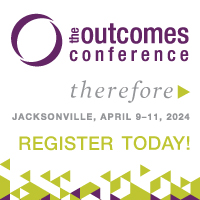
The Stages of Stewardship By Ken R. Wilson
A Historical Look
Stewardship has not always had the same meaning throughout history. Excellent studies have been done on the development of stewardship in the history of the Christian church by Luther Powell and Robert Lynn Wood. In their analyses, one can see the roots of modern definitions and stewardship misconceptions that arose from the emerging missional movement and the need to fund the early American frontier church. Stewardship became associated with systematic benevolence, tithing, sacrificial gifts, thrift, and fundraising.
As valuable as a review of the development of stewardship in the modern age might be, I would like to go even further back to the development of stewardship in the classical age of the slave steward in Egyptian, Greek, Roman, and Jewish society. In those societies, the role of the steward, and hence their stewardship, developed and matured through successive stages.
An interesting factor for modern stewards is that our personal and organizational stewardship concepts share developmental stages similar to those experienced by our ancient cousins. See if you can see modern parallels for each stage as we review them.
Four distinct stages in the steward’s role and responsibilities can be observed from the classical period:
(1) Stewardship as Accounting
In stewardship as accounting, the focus was on the steward’s ability to oversee the resources, account for the quantity and change in resources, and authenticate their protection to the owner. “Master, you now have 40 sheep that I am overseeing for you,” summarized the steward’s responsibility.
(2) Stewardship as Sustainability
The second stage involved introducing operational control with the intent of resource conservation. The steward oversaw the resources with the intent of “returning the corpus intact.” Efficiency in the use of the resources was uppermost in importance. “Master, you put 40 sheep under my care last year, and you still have 40 sheep today.”
(3) Stewardship as Growth
The Parable of the Talents best illustrates the second and third stages of stewardship (Matt. 25, Luke 19). The steward who hid his talents in the ground operated with a sustainability stewardship. The other two stewards who produced growth for the master understood that he wanted them to steward the resources by growing or multiplying them. “Master, last year, you gave me 40 sheep to oversee. I have successfully grown the flock, and there are now 60 sheep.”
(4) Stewardship as Optimization
In this most mature stage, the master entrusts assets to the steward, expecting that they will be strategically managed for maximum ROI and may be converted to other applications when optimization has been achieved (or determined as unachievable). The parable of the unfruitful fig tree (Luke 13:6-9) indicates this mature stage of stewardship. A fig tree that hasn’t born fruit in years must either bear fruit (possibly through additional water and fertilizer) or it will be cut down to make room for other resources. “Master, I have grown your flock to 70 sheep and sold 10. Here is the money that you can reinvest, possibly in goats.”
- At what stage of stewardship are you personally operating as God’s steward?
- How mature is your organization’s understanding of stewardship?
- Is the organization, its leaders, and the Board gradually maturing in their understanding of stewardship?
####
Kent Wilson (PhD) is a leadership coach and nonprofit leadership specialist. After running nonprofit organizations for 30 years, he serves as an executive coach with Vistage International and the Nonprofit Leadership Exchange in Colorado Springs.

What is Christian Leadership Alliance?
Christian Leadership Alliance equips and unites leaders to transform the world for Christ. We are the leaders of Christ-centered organizations who are dedicated to faithful stewardship for greater kingdom impact.
Sign up for FREE blog updates.
Upcoming Events
Check back later!



